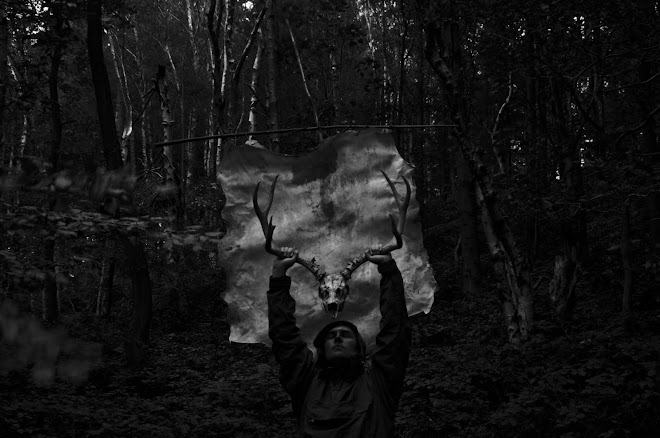


It is here that the character of the wood changes, as subtly yet distinctly as if one had crossed a street. The open sunny rides of ash and sycamore are replaced by a dark brooding wood of ancient oaks, beech and yew and guarding the entrance to this older, deeper valley is an ancient yew tree of such massive proportions it is all one can do to stop from falling to ones knees in front of it. The tree grows out of a steep hillside above the beck, serpentine roots slither out from a thick and gnarled trunk. Slow growing and seemingly immortal this guardian-yew is one of many very old yews growing in the valley bottom of the middle section of the beck, a clue written in elder-ciphers of stone, wood and water revealing the secrets of the Place to those with the Key. The sides of the valley rise and the rocky outcrops become cliffs, cut steeply through the exposed sandstone by the action of the beck over thousands of years. Here the light is dim and diffuse, even at mid-day the bottom of the dale is gloomy and overcast. A forgotten world in which massive trees reach up to the sky above and deep drifts of rich brown beech and oak leaves crunch and crisp below, no matter how quietly one tries to walk through them. Now you are in the Depe Croix Dale of the old balladeer, a haunted valley shunned by good Christian folk because of its reputation as the abode of beasts and devils.
He feared noy ye loute with hys staffe
Nor yet for ye Knyghte in hys mayle
He cared no more for ye Monk with hys boke
Than ye fyendis in depe Croix Dale
Then out spoke Hodge, yt wyghte soe bolde
Yt onse on Ferie hye
And he hathe sworne by Seynt Cuthberte bys rode
Yt this horride brawne shall dye
Here the landscape and folklore combine to form the geomythology of today. The deep, cliff-guarded secret dale is a last pocket of the primal wildwood that blanketed the middle Wear-valley until the middle ages. This lost forest, of which this is a last remaining pocket, was the home of the Brawn of Brancepeth, the monstrous wild boar that was slain by Roger de Feyre “sometime about 1200”, on the hill where Ferryhill now stands and from whom the village takes its name. Roger, or Hodge, is believed to be buried at St John’s Church, Kirk Merrington, which stands on a hill dominating the valley, its 72-foot high tower a landmark for miles around. Ferryhill and Kirk Merrington control the road-ways both north-south and east-west. There are clear sightlines south to the Tees estuary and the North Yorkshire Moors beyond and northwards beyond Durham to the Tyne. These hills were important places of transition and crossing, important enough for ancient churches to be sited on still more ancient hill-tops. Fitting places for the deeds of heroes. Fitting places to cast out devils from deep dark valleys by the erection of crosses and to proclaim the ascendancy of the new god by killing the totems of the old gods.

No comments:
Post a Comment